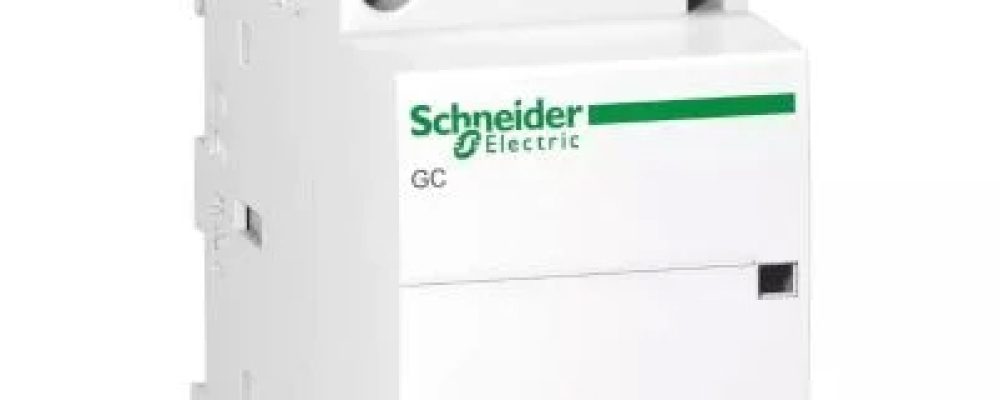When it comes to electrical engineering, the switching technology of the circuits is a crucial component. Switching technologies control the electricity flow, making turning devices on/off possible. Additionally, they regulate current and voltage, protecting equipment from damage caused by overcurrent.
Among various switching technologies available, contactor relays are widely used. They are simple yet reliable switching technology. But are they the best choice for every application?
In this article, we will be comparing contactor relays with other switching technologies. We will highlight their key differences, helping you determine the best fit for you.
What are Contactor Relays?
Contactor Relays are electromagnetic switches that control the electricity flow in a power circuit. They are designed to manage high-current applications, having large electrical loads with a small control signal. When energised, the coil generates a magnetic field, pulling the contacts together and closing the circuit. When the coil is de-energised, the contacts open, breaking the circuit.
Manufacturing plants often use these relays to control motors, pumps, and other high-power equipment. They are also used in HVAC systems to control heating and cooling equipment. Moreover, they are used with overload relays and thermal protectors, protecting the equipment from overcurrent or overheating damage.
What are Other Switching Technologies?
There are multiple switching technologies available in the market today. Let us examine each individually:
Mechanical Switches
Mechanical switches are basic switches employed to open and close an electrical circuit. These switches are available in various types, including toggle, rocker, and push-button. They are often used in low-voltage applications, making them incompatible with high-current loads. Mechanical switches are simple and reliable. However, they have a limited lifespan due to the wear and tear caused by physical contact.
Solid-State Relays (SSRs)
Solid-state relays use semiconductor technology to control the power flow. They have zero moving parts and work by using electronic circuits to switch the power on/off. The lack of moving parts makes them more reliable and durable. These relays are used in applications requiring high switching speeds, such as robotics and automation systems.
However, SSRs are more expensive than contactor relays and unfit for high-current applications. They also generate more heat which can be an issue in applications where cooling is a concern.
Circuit Breakers
Circuit breakers protect electrical circuits from overcurrent. These breakers automatically interrupt the current flow when it surpasses a certain level. They have a switch that identifies overcurrent and trips the circuit. Widely employed in residential and commercial buildings, the breakers protect electrical circuits and prevent electrical fires. They are available in different types, including thermal-magnetic, hydraulic-magnetic, and electronic.
However, circuit breakers are unsuitable for high-current applications and have lower durability than contactor relays. They also have a higher cost than contactor relays.
Contactor Relay vs Other Switching Technologies
While selecting a switching technology, consider the application requirements, cost, reliability, and lifespan factors. Here is a detailed comparison of contactor relays with other switching technologies:
- Contactors vs Mechanical Switches
Contactors are electromechanical devices that switch high voltage or current loads using an electromagnetic field. Contactors are employed in industrial applications and have a relatively low cost. On the other hand, mechanical switches are simple devices. They use physical movement to make or break a connection. Switches are commonly used in low-voltage applications but unsuitable for switching high-current loads.
- Contactors vs Solid-State Relays
Contactor relays are suitable for high-current applications, while SSRs are not. These relays are also more durable and have a longer lifespan than SSRs. On the contrary, SSRs have a faster switching time and are more reliable than contactor relays. But they are more expensive and generate more heat than contactor relays.
- Contactors vs Circuit Breakers
Contactor relays are suitable for high-current applications, while circuit breakers protect electrical systems from overcurrent. Contactors have a longer lifespan and are more durable than circuit breakers. But circuit breakers are more precise and can detect overcurrent more quickly. Circuit breakers also have a lower voltage drop and are less expensive than contractors.
Check this table to understand the difference between switching technologies.
| Factor | Contactor Relay | Solid-State Relay | Switches | Circuit Breakers |
| Switching Capacity | High | Low | Low | Specific Current |
| Durability | Low | High | Low | Medium to High |
| Response Time | Slow | Fast | Slow | Slow |
| Noise | Yes | No | Yes | Yes |
| Cost | Low | High | Low | Medium to High |
The Right Switching Technology
Selecting the correct switching technology is crucial to ensure reliability, efficiency, and safety. Contactor relays are versatile switching technologies suitable for various applications. They can be employed to switch high current loads and are relatively inexpensive compared to other switching technologies.
Get the best switching technology for your building and ensure maximum safety.

